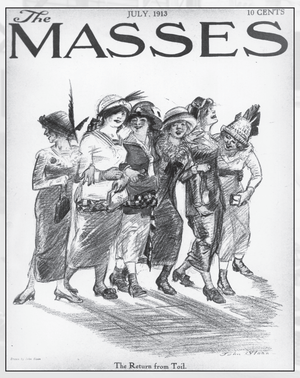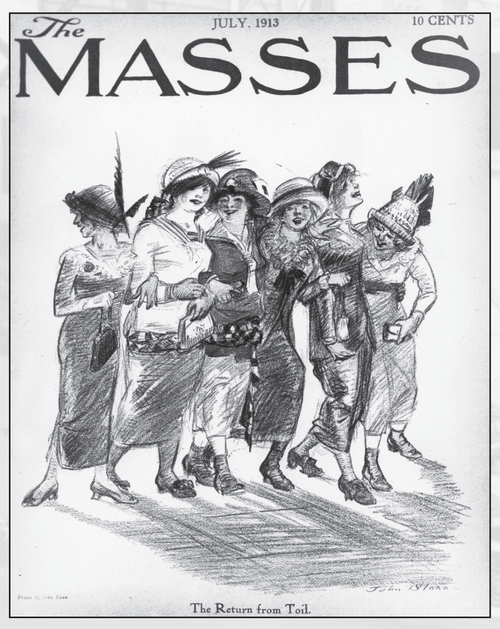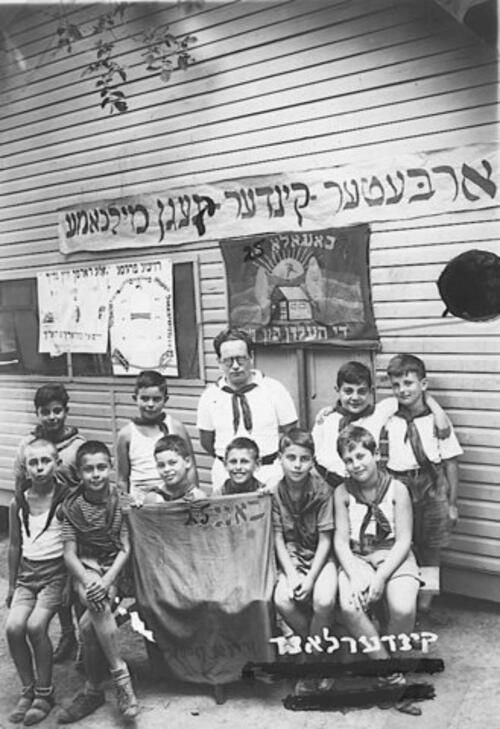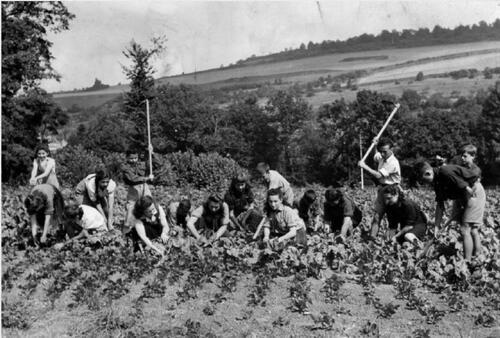Identity, Independence, and Becoming American Jews
Examine inter-generational relationships among Jewish immigrants, and the role of work and workers’ youth culture in the Americanization process. Use art and writing to explore your own identity formation.
Overview
Enduring Understandings
- Working in the garment industry, Jewish immigrants encountered American culture and began to forge American Jewish identities.
- Even though work in the garment industry was often low-paying and difficult, it provided social and economic opportunity for young workers.
- By working outside the home with other young people, immigrants in the garment industry cultivated peer group identities that connected them to the broader American culture and helped them differentiate from their families.
Essential Questions
- In what ways do you identify as “American”? How does that identity intersect with the other aspects of your identity, for example, being a Jew, a member of a particular socio-economic class, a person who lives in a urban/suburban/rural area, being an athlete/band member/dancer, etc?
- How can work be liberating? How can being a part of group be meaningful?
- How do you and your friends define your place in American society?
Materials Required
- Sheets of brown wrapping paper and white butcher paper, approximately 5 feet by 2 feet in size, one for each student (8 ½ by 14” paper can also be used, and the effect will be quite different)
- thick drawing pencils and markers or paints
- glue sticks, fabric glue, and/or craft paste
- collage-making materials ranging from fabrics, buttons, beads, sequins, and other apparel items to natural items, such as sand, shells, stones, etc. to anything else that is available, with the exception of newspapers and magazines, the usual stuff of kids’ collage making (Staying away from two-dimensional sources, particularly those familiar to the students, will inspire greater creativity with three-dimensional sources. Once they have the assignment, they may choose from a category of objects—quilt squares or ceramic tile pieces, for example—or they may have disparate items in their possession that they think will work well in a collage format to say what they want their work to say.)
- Students can also be invited to bring in materials for collages
- Pieces of cardboard from cut-up boxes measuring 18”x24” for the collages; other options include poster board or foam core.
Notes to Teacher
Parts 1 and 3 of the lesson can be done as art projects or as creative writing projects. The directions for doing them as art projects precede the directions for doing them as writing projects. It’s important to note that teachers need not be trained art teachers to direct students in these art projects. When you are ready to have students make their collages, you can invite in the art teacher, a community member, or a particularly artistically skilled and articulate student to talk about the basics of composition in five minutes, if that would give you and your students more confidence in taking on the art projects. You may want to display the students' art work in your classroom afterwards. If you choose to do the large body outlines and don't have sufficient room to display them, you can photograph them and post the photos instead of the originals.
Part 2 of the lesson can be done as a homework assignment in between classes or as a 30 to 45 minute discussion during class time.
It’s also important for teachers to consider that including art both as a way for students to figure out what they think and as a way for students to demonstrate their learning can increase some learners’ enthusiasm for and understanding of the work. Moreover, a lesson on workers’ identification as “Americans” and how that developed through their work and peer group experiences, lends itself to a multi-media assessment as a way of getting at layers of nuanced feelings and attitudes. The lesson will serve this purpose just as well if Parts 1 and 3 are done through expository and creative writing.
Of equal importance when conducting this lesson is sensitivity to and appreciation for students’ diverse backgrounds that may or may not be apparent from looking at the students. This may include racial and/or ethnic diversity; being adoptees or in foster care; being immigrants or children of immigrants; being Queer, Trans, or non-binary; being part of a non-traditional family structure; and coming from families who are religiously diverse. These qualities, which may seldom be revealed in the classroom, will likely become quite pronounced in this lesson.
The following biographies can be used in connection to this lesson:






